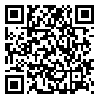BibTeX | RIS | EndNote | Medlars | ProCite | Reference Manager | RefWorks
Send citation to:
URL: http://bloodjournal.ir/article-1-144-en.html

 , H. Ghaffari *
, H. Ghaffari * 
 , A. Gharehbaghian
, A. Gharehbaghian 
 , K. Alimoghaddam
, K. Alimoghaddam 
 , M. Dehghan
, M. Dehghan 
 , A. Ghavamzadeh
, A. Ghavamzadeh 
 , A. Shamshiri
, A. Shamshiri 

Abstract
Background and Objectives
Cytomegalovirus (CMV) is an important pathogen in patients undergoing bone marrow transplantation. The prevalence of CMV varies from 30-100% in different countries as shown by seroepidemiological studies. Only 20-25% of patients develop CMV disease. Because of the similarity between CMV and GVHD and the different therapies required, detection of viral load will be effective in patients' survival.
Materials and Methods
51 recipients of BMT were monitored for 100 days post-BMT during which the samples were collected weekly. The Real-Time PCR was developed for quantitation of CMV viral DNA, using TaqMan tecnnology. For generation of standard curve, UL83 gene from CMV was cloned into a plasmid using a T/A cloning procedure. RQ-PCR assay was preformed in parallel with pp65 antigenemia assay on 415 samples.
Results
The results obtained by both techniques were significantly correlated (p<0.01). We could detect 13×101 -15×107 (CMV DNA copies/2×105 cells) by RQ-PCR method. About 76% of patients developed at least one episode of CMV reactivation. First positive result of RQ-PCR appeared 13 days earlier than of pp65 antigenemia. After preemptive therapy, 16 days were required to achieve negative result by RQ-PCR.
Conclusions
Both assays were highly correlated however, RQ-PCR was more sensitive than the antigenemia assay. After preemptive therapy, negative results of RQ-PCR were the best indicator to determine the endpoint of treatment and its success.
Key words : Cytomegalovirus (CMV), Bone Marrow Transplant (BMT), PCR.
| Rights and permissions | |
 |
This work is licensed under a Creative Commons Attribution-NonCommercial 4.0 International License. |



